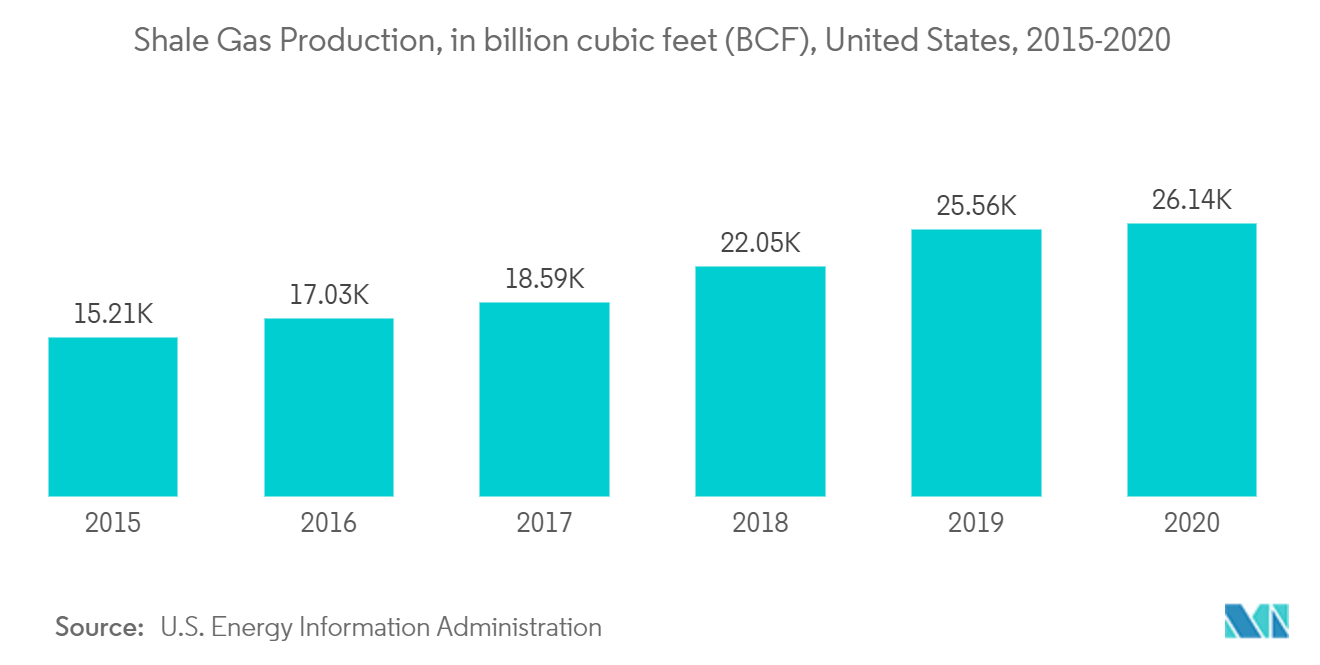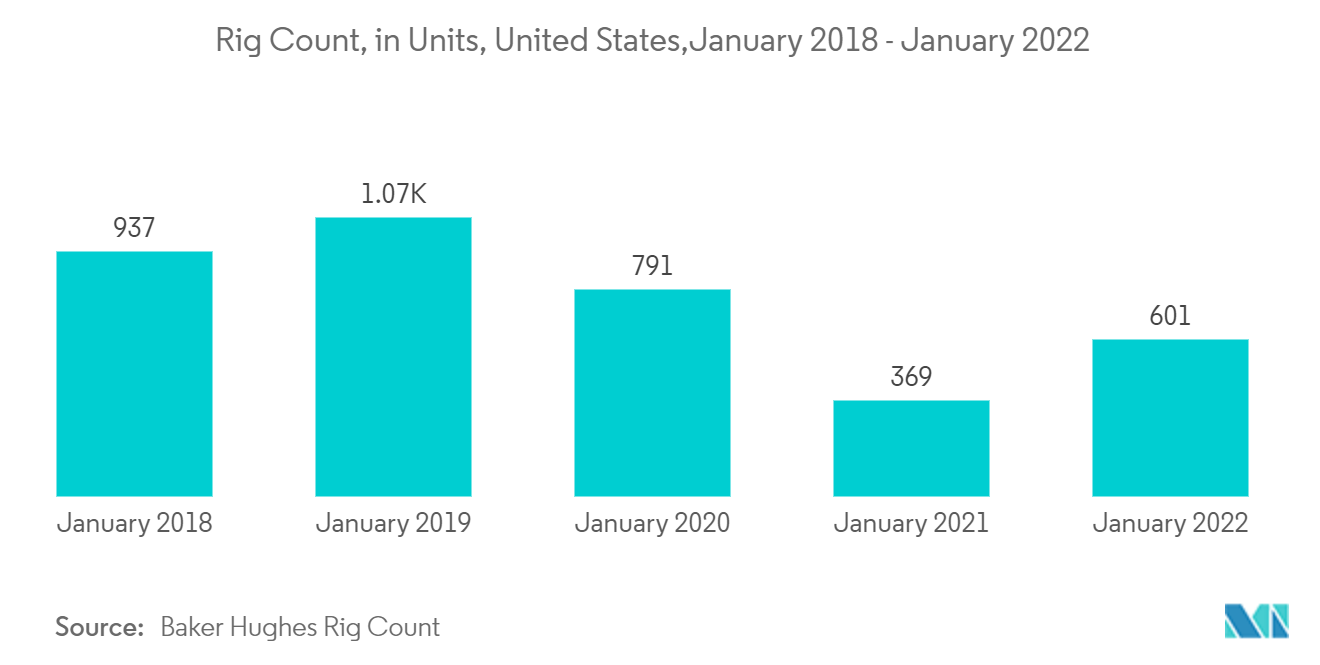Market Trends of United States Shale Business Overview
This section covers the major market trends shaping the US Shale Business Market according to our research experts:
Shale Gas to Dominate the Market
- Shale gas is generally produced by hydrofracturing the reservoir to increase the permeability so the gas can easily flow and be produced. Shale gas is usually 95% pure methane. It has significantly less amount of impurities, like sulfur, due to which the processing cost of shale gas decreases than the natural gas processing cost.
- The United States has planned to decrease its carbon signature by using cleaner fuels, such as shale gas, from which the carbon emissions are significantly less.
- As of 2021, the United States was the world's largest producer of dry natural gas, producing 20% of the world's total supply, 40% of which is derived from shale. The country boasts three major shale plays that account for over 70% of total production.
- The shale gas production in the United States increased from 25,556 billion cubic feet (bcf) in 2019 to 26,139 bcf in 2020. Shale gas production may increase further due to new wells being drilled across the country.
- Also, an estimation by the Energy Information Agency (EIA) shows that the US dry shale gas production in 2020 was about 850 billion cm. The current scenario of the region would demand more natural gas supply for power generation, which may attract investment in the exploration and production of shale gas.
- In 2022, ExxonMobil Corporation and Chevron announced a plan to increase oil drilling to boost the exploration and production activities in the Permian Basin of the United States. The Permian Basin is a shale reservoir producing the highest amount of shale gas in the country.
- Therefore, owing to the above points, shale gas is likely to dominate the US shale market during the forecast period.

Increasing Deep Water Activities Expected to Drive the Market
- Deepwater activities in the US Gulf of Mexico are likely to drive the market during the forecast period. Many companies after 2014 decreased their investments in the offshore market. Still, due to the decrease in the cost of drilling rigs and less investment return period than onshore, offshore activities again gained their pace. Due to this, Deep-water activity is expected to see significant growth in the United States shale market during the forecast period.
- The Gulf of Mexico accounts for 15-16% of US crude oil production. In 2020, crude oil production in the Gulf of Mexico averaged 1.65 million (Barrels/Day) b/d. The US Energy Information Administration forecasted that production would reach 1.71 million b/d in 2021 and 1.75 million b/d in 2022, which will drive the market for sale in the United States.
- The oil rig count in the United States increased to an average of 619 units in 2022, up from 475 units in 2021. An increase in the number of rigs will increase the exploration activities in deepwater.
- In July 2021, a final investment decision (FID) for the Whale development in the US Gulf of Mexico was completed. The whale development is owned by Shell Offshore Inc. (60% operator) and Chevron USA Inc. (40%), is expected to reach peak production of approximately 100,000 barrels of oil equivalent per day (boe/d) and currently has an estimated recoverable resource volume of 490 million boe.
- In February 2022, W&T Offshore increased its US Gulf of Mexico footprint following the acquisition of producing shallow-water assets in the area.
- Moreover, in 2021, British Petroleum's 140,000 b/d Mad Dog 2 project and its 50,000 boe/d Thunder Horse South Phase 2 project were commenced, which would boost production in the United States.
- Hence, the increasing deepwater activities are expected to drive the US shale market during the forecast period.


